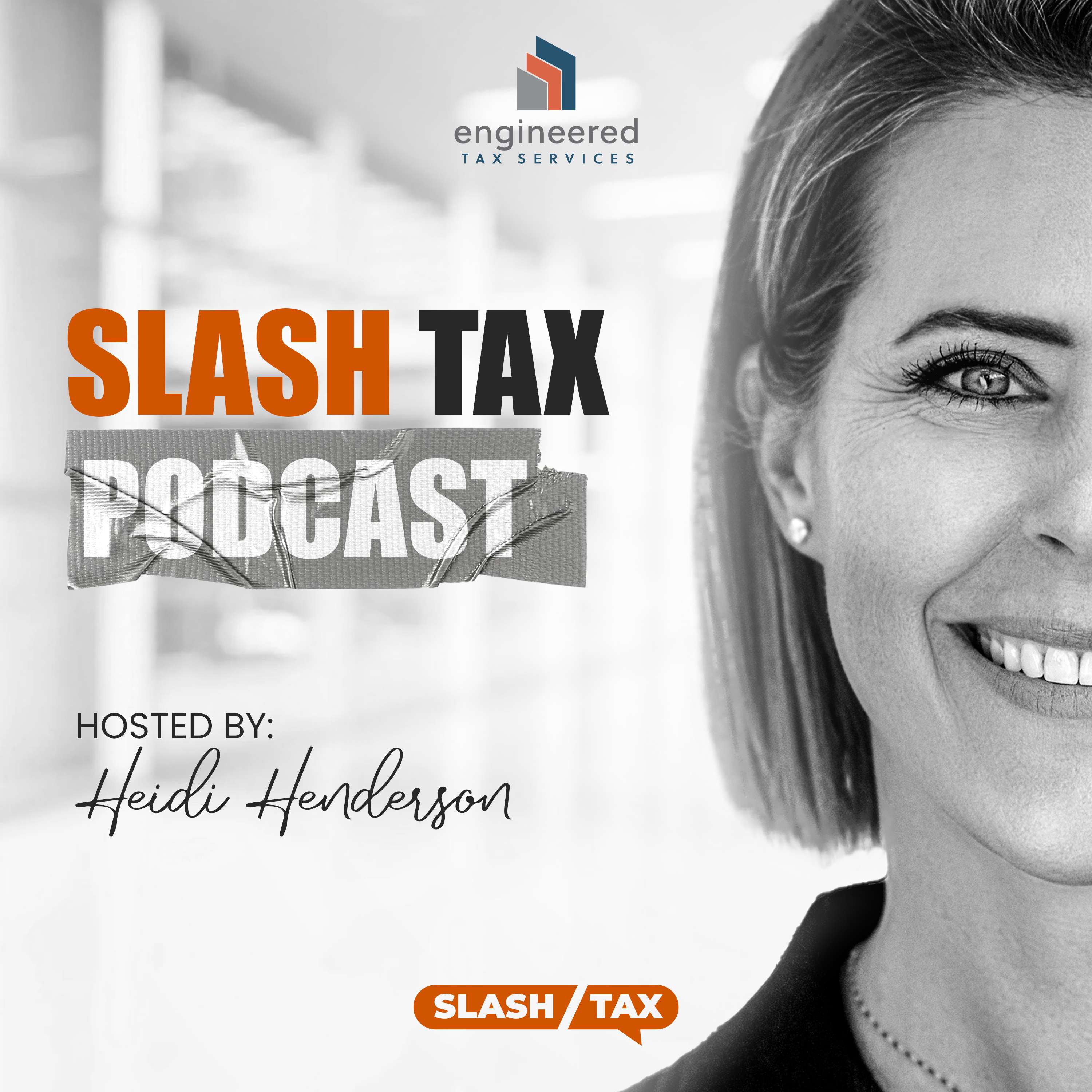Slash Tax

Slash Tax
Podcast Description
Slash Tax is your go-to podcast for legal tax strategies, powerful incentives, and tax-advantaged investments. Hosted by Heidi Henderson, this show is designed for high-income earners, business owners, real estate investors, and CPAs who want to cut tax bills, keep more cash, and build lasting wealth. Each episode brings expert insights, actionable strategies, and real-world examples—helping you take control of your financial future.
Podcast Insights
Content Themes
The podcast covers a range of tax-related topics including investment strategies, legal tax strategies, and personal finance. Specific episodes delve into oil and gas investing with tax benefits, leadership transformations in finance, and the latest tools for tax planning like AI integration. The show emphasizes actionable strategies and real-world examples for high-income earners and business owners.

Slash Tax is your go-to podcast for legal tax strategies, powerful incentives, and tax-advantaged investments. Hosted by Heidi Henderson, this show is designed for high-income earners, business owners, real estate investors, and CPAs who want to cut tax bills, keep more cash, and build lasting wealth. Each episode brings expert insights, actionable strategies, and real-world examples—helping you take control of your financial future.
What if the difference between paying taxes and building wealth is just a shift in mindset? In this episode, Heidi Henderson sits down with Mark J. Kohler, attorney, CPA, bestselling author, and one of the most trusted voices in tax and legal strategy for small business owners and real estate investors. Mark shares how to move beyond compliance into actual advisory work, revealing the tax strategies and legal tools that help entrepreneurs protect their wealth and maximize value. Whether you’re a professional looking to elevate your practice or an investor ready to sharpen your tax game, this conversation delivers the frameworks and insights you need to take control of your financial future.
On today’s episode, we’ll cover:
- Mark’s journey from compliance-focused professional to attorney, CPA, author, and advisor helping thousands build more innovative wealth strategies
- The mindset shift required to move from “filing returns” to delivering transformational tax and legal advisory services
- The most significant tax and legal mistakes small business owners and real estate investors make and how to avoid them
- Balancing aggressive tax strategies with client protection and IRS compliance
- Overlooked tax strategies for real estate investors and business owners, including navigating passive loss limitations and basis calculations
- Near-term tax opportunities with evolving legislation that savvy investors should act on now
- Practical steps for professionals ready to transition into advisory work and create lasting client impact
Mark J. Kohler is an attorney, CPA, author, speaker, and educator who has spent his career empowering small business owners, professionals, and real estate investors to master the intersection of tax, law, and wealth. Through his firm, books, and educational platform, Mark has served thousands of clients, helping them move beyond basic compliance into strategic advisory that protects assets and maximizes financial opportunities. His work focuses on making complex tax and legal concepts accessible while delivering high-impact strategies that drive real results.
Connect with Mark:
- TikTok: https://www.tiktok.com/@markjkohler
- Instagram: https://www.instagram.com/markjkohler
- Facebook: https://www.facebook.com/markkohler/
- LinkedIn: https://www.linkedin.com/company/mark-j-kohler-company/
- YouTube: https://www.youtube.com/c/markjkohler
- X (Twitter): https://x.com/markkohler
Ready to slash your tax bill and build lasting wealth? Subscribe to the Slash Tax Podcast for more expert insights, proven strategies, and actionable advice. Leave us a review, share this episode with your network, and visit the link in our bio to explore resources that can transform your financial future. Don’t miss the next episode. Your wealth depends on it!

Disclaimer
This podcast’s information is provided for general reference and was obtained from publicly accessible sources. The Podcast Collaborative neither produces nor verifies the content, accuracy, or suitability of this podcast. Views and opinions belong solely to the podcast creators and guests.
For a complete disclaimer, please see our Full Disclaimer on the archive page. The Podcast Collaborative bears no responsibility for the podcast’s themes, language, or overall content. Listener discretion is advised. Read our Terms of Use and Privacy Policy for more details.